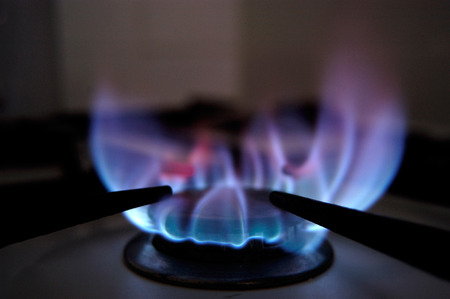1. Understanding Your Camp Stove Fuel Options
If you’re planning your next outdoor adventure, picking the right fuel for your camp stove is just as important as packing your favorite snacks or choosing the perfect campsite. Before you set off into the wild, it’s good to get a handle on the basics of propane, butane, and multi-fuel options. Each fuel type has its own vibe, benefits, and best-use scenarios—so let’s break it down in a way that makes sense for American campers.
Propane: The All-American Go-To
Propane is probably what comes to mind first when you think about grilling burgers at a backyard BBQ or firing up a camp stove at a national park. Sold in those classic green canisters you’ll find at Walmart or REI, propane works well in most weather conditions—even when the temps drop below freezing. Plus, it’s super easy to find and use.
Butane: Lightweight and Urban-Friendly
Butane is all about compact convenience. It’s lighter than propane and often comes in slim cartridges that work perfectly with sleek, portable stoves. But there’s a catch—butane doesn’t perform as well when it gets cold (think late fall camping in the Rockies). It’s great for car camping trips or picnics where you want to keep things simple and light.
Multi-Fuel: The Versatile Adventurer
If you like to travel off the beaten path or love international adventures, multi-fuel stoves might be your jam. These stoves are adaptable—they can burn white gas, kerosene, unleaded gasoline, and sometimes even diesel. Multi-fuel stoves are popular with backpackers who need flexibility wherever they go, whether that’s Yosemite or Yellowstone.
Quick Comparison Table
| Fuel Type | Best For | Cold Weather Performance | Availability | Ease of Use |
|---|---|---|---|---|
| Propane | All-around camping, family trips, RVs | Excellent | Very easy to find across the U.S. | Simple – screw on and go |
| Butane | Short trips, car camping, urban settings | Poor (not ideal below 32°F/0°C) | Common in stores, especially cities | Very easy – quick cartridge setup |
| Multi-Fuel | Backpacking, international travel, remote areas | Good (depends on fuel used) | Flexible – can use various fuels worldwide | Requires some practice to operate safely |
A Few Things to Consider Before You Choose:
- Your Adventure Style: Are you road-tripping across California or hiking deep into Utah’s backcountry?
- The Season: Cold nights by Lake Tahoe? Or summer cookouts in Joshua Tree?
- Fuel Access: Will you be near stores or totally off-grid?
- Packing Space: Do you have room for bulky tanks or do you need something more compact?
If you know these basics about propane, butane, and multi-fuel options, you’ll be ready to choose a camp stove fuel that matches your style—and keeps those campfire meals coming!
2. Propane: The Go-To for Weekend Warriors
Why Propane Is a Top Choice for American Campers
If you’ve spent any time at a U.S. campground, chances are you’ve seen plenty of classic green propane canisters. Propane is the fuel of choice for many American campers, especially weekend warriors and car campers, thanks to its convenience and reliability. Let’s break down why propane stands out and what makes it so well-loved from coast to coast.
Key Benefits of Using Propane
| Benefit | Why It Matters |
|---|---|
| Easy to Find | You’ll find propane canisters in nearly every outdoor store, big box retailer, and even gas stations across the U.S. |
| User-Friendly | No need for special adapters or tricky refills. Just twist on a canister and you’re ready to cook. |
| Works in Cold Weather | Unlike butane, propane performs well even when temperatures drop, making it ideal for shoulder seasons or chilly mornings. |
| Affordable | Propane is budget-friendly, with inexpensive single-use canisters and refillable tank options. |
| Versatile Uses | Powers everything from simple stoves to lanterns, portable grills, and even some heaters. |
Common Ways Campers Use Propane
- Cooking Breakfast at the Campsite: Fire up a two-burner stove for pancakes, eggs, and coffee—no firewood required.
- Grilling Burgers and Hot Dogs: Many tailgaters and family campers rely on portable propane grills for that classic backyard taste.
- Keeping Warm: On brisk evenings, small propane-powered heaters help take the edge off without worrying about open flames.
- Lighting Up the Night: Propane lanterns are a staple for after-dark card games or late-night marshmallow roasts.
What Type of Camper Loves Propane?
If you’re driving up to your campsite or don’t mind carrying a little extra weight, propane is practically made for you. Families, road trippers, and anyone who loves a comfortable setup will appreciate how easy propane makes camp cooking and living. It’s all about that grab-and-go lifestyle—just pack your gear, pick up a couple of canisters on your way out of town, and let the adventure begin!
![]()
3. Butane: Lightweight and Compact for Urban Escapes
If your camping adventures take you closer to city parks, cozy backyard patios, or quick weekend getaways, butane is a solid choice for your camp stove. With its reputation for being ultra-lightweight and highly portable, butane is the go-to fuel for minimalists and backpackers who value simplicity and ease of use over long-term wilderness survival.
Why Choose Butane?
Butane canisters are usually small, making them easy to toss into a daypack or store in the trunk of your car without taking up much space. The setup is straightforward—just snap the canister onto compatible stoves and you’re ready to cook. This makes butane especially attractive for urban campers, festival-goers, or anyone looking for a no-fuss solution to outdoor meals.
Best For Mild Climates
One thing to keep in mind: butane performs best in temperatures above freezing (32°F/0°C). In cold weather, the fuel doesn’t vaporize as efficiently, which can lead to slow cooking times or even trouble igniting. If you plan on camping during spring, summer, or early fall—or if you’re staying close to home—butane will likely meet all your needs.
Butane at a Glance
| Feature | Butane |
|---|---|
| Weight | Very lightweight |
| Portability | Highly portable; compact canisters |
| Ease of Use | Simple snap-on connection; user-friendly |
| Best Temperature Range | Above 32°F / 0°C (mild climates) |
| Common Users | Backpackers, minimalists, urban campers |
| Main Drawback | Poor performance in cold weather |
The Minimalist’s Choice
If you love the idea of spontaneous picnics in the city, short hikes with a hot coffee break, or keeping things light and simple on the trail, butane is hard to beat. Its combination of low weight and hassle-free setup makes it perfect for those who want to spend more time enjoying their adventure—and less time fiddling with gear.
4. Multi-Fuel Stoves: Ultimate Flexibility for Every Adventure
If you’re planning to camp anywhere from the Rockies to remote corners of Asia, a multi-fuel stove can be your best friend. These stoves are designed for campers and backpackers who want maximum adaptability—no matter where adventure calls.
Why Choose a Multi-Fuel Stove?
Unlike propane or butane-only stoves, multi-fuel models can burn a variety of fuels such as white gas, kerosene, unleaded gasoline, and sometimes even diesel. This makes them a true go-anywhere option for campers who don’t want to worry about finding compatible fuel.
Seamless Travel, Near or Far
If you love exploring international destinations or tackling off-the-grid locations in the US, fuel availability is rarely guaranteed. Multi-fuel stoves let you adapt on the fly—fill up with whatever’s handy at a local store or gas station. Whether you’re road-tripping through Utah’s red rocks or backpacking across Patagonia, your stove is ready for action.
Ready for Any Weather
Multi-fuel stoves excel in unpredictable weather conditions. When temps drop below freezing and traditional canisters struggle, liquid fuels like white gas keep burning hot and strong. That means no more half-cooked meals when snow starts falling on your tent.
Multi-Fuel Stove Pros & Cons
| Pros | Cons |
|---|---|
| Works with multiple fuel types (gasoline, kerosene, white gas) | Tends to be heavier and bulkier than single-fuel stoves |
| Reliable in cold weather and high altitudes | Requires regular maintenance and cleaning |
| Perfect for international travel where canisters may not be available | Can take longer to set up and prime before use |
| Saves money by using locally available fuels | Some fuels can be messy or smelly to handle |
Who Should Consider a Multi-Fuel Stove?
If you thrive on spontaneous adventures, dream of global backpacking trips, or just want peace of mind when Mother Nature gets wild, a multi-fuel stove offers unmatched flexibility. It’s the ultimate choice for explorers who value options and reliability over ultra-lightweight gear.
5. How to Choose: Key Factors and Pro Tips
Picking the right fuel for your camp stove is about more than just what you see on the shelf. Here’s what really matters when you’re making that all-important choice—plus some insider advice to help you cook up a great camping experience.
Key Factors to Consider
Fuel Availability
Think about where you’ll be camping. Propane is widely available across the U.S.—you’ll find those green canisters at big box stores, gas stations, and even some campgrounds. Butane is less common in rural areas. Multi-fuel stoves (which can use white gas, kerosene, or unleaded gasoline) are a favorite for international travel or remote locations where specialty fuels might be hard to come by.
Temperature Range
Heading out in summer? Butane works fine. Planning a winter adventure? Propane performs better in cold temps, while multi-fuel stoves are champs in freezing conditions. Here’s a quick comparison:
| Fuel Type | Best Temp Range | Cold Weather Performance |
|---|---|---|
| Propane | -40°F to 110°F | Excellent |
| Butane | 32°F to 110°F | Poor below 32°F |
| Multi-Fuel | -40°F to 110°F (varies by fuel) | Very Good |
Pack Size and Weight
If you’re car camping, pack size isn’t a big deal. But if you’re backpacking, every ounce counts. Butane and small propane canisters are compact, while multi-fuel bottles can be heavier but last longer between refills.
| Fuel Type | Packing Size | Suits For |
|---|---|---|
| Propane (small canister) | Medium-small, sturdy shape | Car Camping/Short Backpacking Trips |
| Butane (canister) | Very compact, lightweight | Backpacking/Day Hikes |
| Multi-Fuel (bottle) | Bigger, refillable metal bottle | Long Expeditions/International Travel/Winter Camping |
Pro Tips from U.S. Campers & Outdoor Pros
- If you love spontaneous road trips: Stick with propane—you’ll always find it at Walmart or REI along your route.
- If you’re backpacking light: Butane canisters keep your load minimal for short trips in warmer months.
- If you want one stove for all seasons: Go for a multi-fuel model—you’ll never get caught off guard by cold snaps or lack of fuel options.
- Packing hack: Save space by picking up smaller canisters as you go, or split fuel bottles with your camp buddies for group trips.
The right fuel makes cooking outdoors easy—so match your choice to your trip plans, weather forecast, and how much gear you want to haul!
6. Safe and Sustainable Fuel Practices
Smart Storage: Keeping Safety First
Storing your camp stove fuel safely is key to both personal safety and protecting the environment. Always keep propane, butane, and multi-fuel canisters in a cool, dry place away from direct sunlight or heat sources. Never leave fuel canisters inside a hot car or tent, as high temperatures can cause pressure to build up.
Quick Guide: Storing Different Fuels
| Fuel Type | Storage Location | Key Tips |
|---|---|---|
| Propane | Well-ventilated area, upright position | Avoid enclosed spaces; check for leaks regularly |
| Butane | Cool, shaded spot, out of sun | Store away from flames; don’t puncture empty canisters |
| Multi-Fuel (White Gas/Kerosene) | Tightly sealed container, away from children and pets | Label clearly; keep away from food and water supplies |
Transporting Fuel the Right Way
When you’re heading out on an adventure, transporting fuel safely is just as important as storage. For car camping, secure fuel upright in your trunk or bed of your truck. If you’re flying, check airline regulations—most fuels aren’t allowed on commercial flights. On backpacking trips, pack fuel outside your main bag compartment and always double-check for leaks.
Packing Checklist for Transporting Camp Stove Fuel:
- Inspect canisters for dents or rust before packing
- Tighten caps and valves securely
- Separate fuel from food items and electronics
- Carry a zip-top bag for storing used or leaky canisters until you get home
Leave No Trace: Minimizing Your Environmental Footprint
Caring for nature is part of every outdoor adventure. Choose refillable bottles over disposable ones when possible—especially with multi-fuel stoves. If you use disposable propane or butane canisters, recycle them at designated collection sites (many outdoor stores offer this service). Never burn or bury used canisters!
Sustainable Camp Cooking Tips:
- Select the right amount of fuel for your trip to avoid waste
- Use windshields on your stove to cook more efficiently and save fuel
- Certain fuels burn cleaner—propane produces less soot than kerosene or diesel-based options
- If using wood with a multi-fuel stove, stick to downed branches rather than cutting live trees
Stay smart and eco-conscious by practicing safe storage, thoughtful transport, and minimizing your impact on every adventure. With a little planning, you can keep both yourself and the great outdoors safe for seasons to come.


